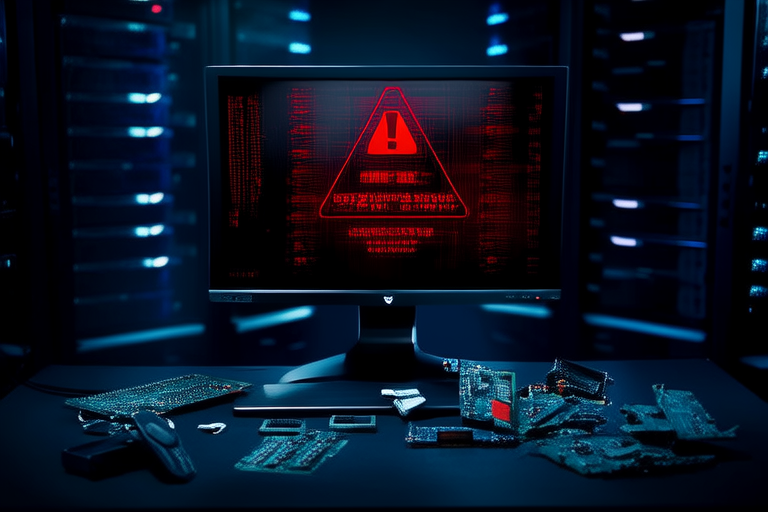“`html
Cyber Attacks Unveiled: Understanding the Tactics Behind the Breaches
Introduction
Cyber attacks have become an increasingly prevalent threat in today’s digital age, affecting individuals, businesses, and governments alike. These malicious activities can result in significant financial losses, data breaches, and reputational damage. Understanding the tactics behind these breaches is crucial for both preventing and mitigating their impact. This article aims to provide a comprehensive overview of the different types of cyber attacks, the methods employed by hackers, and the strategies that can be used to safeguard against them.
Types of Cyber Attacks
Phishing
Phishing attacks involve tricking individuals into revealing sensitive information such as usernames, passwords, and credit card details. These attacks often come in the form of emails or text messages that appear to be from legitimate sources. For example, in 2016, the Democratic National Committee (DNC) was targeted by a sophisticated phishing campaign that compromised the email accounts of several staffers, leading to the leak of confidential emails.
Ransomware
Ransomware is a type of malware that encrypts victims’ files and demands payment in exchange for the decryption key. In 2017, the WannaCry ransomware attack affected over 200,000 computers across 150 countries, causing widespread disruption in healthcare, finance, and other critical sectors. The attackers demanded payment in Bitcoin, exploiting a vulnerability in Microsoft Windows.
Distributed Denial of Service (DDoS)
A DDoS attack involves overwhelming a target system with excessive traffic, rendering it unavailable to legitimate users. In 2016, the Mirai botnet launched a massive DDoS attack on Dyn, a major DNS provider, resulting in outages for popular websites like Netflix, Twitter, and Reddit. The attack exploited vulnerable IoT devices to amplify its impact.
Malware
Malware encompasses a broad category of malicious software designed to harm or exploit systems. Examples include viruses, worms, trojans, and spyware. In 2019, the NotPetya malware attack caused billions of dollars in damages, targeting Ukraine but spreading globally through infected software updates.
Tactics Employed by Hackers
Vulnerability Exploitation
Hackers often exploit known vulnerabilities in software and hardware to gain unauthorized access. These vulnerabilities may include unpatched security flaws or misconfigurations. Regular updates and patches are essential to mitigate such risks.
Social Engineering
Social engineering involves manipulating individuals into divulging confidential information or performing actions that compromise security. Techniques include pretexting, baiting, and quid pro quo. For instance, an attacker might pose as a trusted colleague to extract login credentials.
Insider Threats
Insider threats arise when individuals within an organization misuse their access privileges for malicious purposes. This could involve intentional sabotage or unintentional negligence. Implementing robust access controls and monitoring can help mitigate this risk.
Advanced Persistent Threats (APTs)
APTs are long-term, stealthy attacks conducted by highly skilled adversaries, often motivated by espionage or industrial sabotage. These attacks typically involve multiple stages, including reconnaissance, initial intrusion, lateral movement, and exfiltration of data. The Stuxnet worm, discovered in 2010, exemplifies an APT that targeted Iran’s nuclear program.
Zero-Day Exploits
A zero-day exploit takes advantage of previously unknown vulnerabilities before they are patched. These attacks can be extremely dangerous because there are no immediate defenses available. Organizations must stay vigilant and apply patches promptly after they become available.
Common Targets and Motivations
Targets
Cyber attacks can target various entities, including:
- Individuals: Personal data theft, identity fraud.
- Small and Medium Enterprises (SMEs): Financial gain, intellectual property theft.
- Large Corporations: Disruption of operations, competitive intelligence.
- Governments: Espionage, political influence, national security threats.
Motivations
The motivations behind cyber attacks vary widely:
- Financial Gain: Ransomware, credit card fraud, and cryptocurrency mining.
- Espionage: Theft of sensitive information, trade secrets, and strategic plans.
- Disruption: DDoS attacks, sabotage, and propaganda.
- Revenge: Malicious insiders or disgruntled employees.
Prevention and Mitigation Strategies
Practical Advice
To protect against cyber attacks, individuals and organizations should adopt the following best practices:
- Use Strong Passwords: Create complex passwords and enable two-factor authentication.
- Stay Updated: Regularly update software and operating systems to patch vulnerabilities.
- Backup Data: Regularly back up important data to prevent loss due to ransomware or other attacks.
- Employee Training: Educate staff about phishing, social engineering, and safe browsing habits.
- Incident Response Plan: Develop and maintain an incident response plan to minimize damage and recover quickly.
Cybersecurity Policies
Implementing strong cybersecurity policies is crucial for maintaining a secure environment. Policies should address:
- Data classification and handling procedures.
- Access control and privilege management.
- Network segmentation and monitoring.
- Data encryption and secure transmission.
Technology Solutions
Utilizing advanced technology solutions can enhance protection against cyber threats:
- Firewalls and Intrusion Detection Systems (IDS): Monitor and block unauthorized access.
- Antivirus and Anti-Malware Software: Detect and remove malicious software.
- Email Filtering and Spam Protection: Prevent phishing and spam attacks.
- Intrusion Prevention Systems (IPS): Proactively block attacks before they cause damage.
Conclusion
Cyber attacks pose a significant threat to modern society, impacting individuals, businesses, and governments worldwide. By understanding the tactics employed by hackers and implementing robust prevention and mitigation strategies, we can better protect ourselves from these threats. However, the landscape of cyber threats is constantly evolving, necessitating continuous vigilance and adaptation. Stay informed, stay proactive, and prioritize cybersecurity to safeguard your digital assets.
“`




